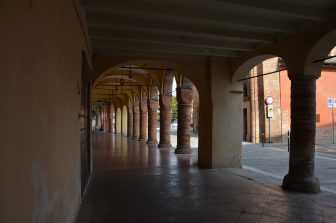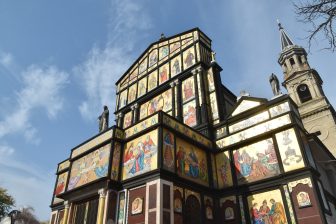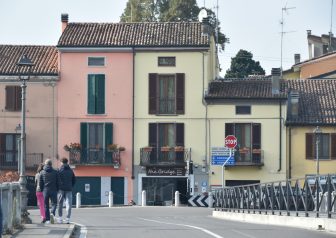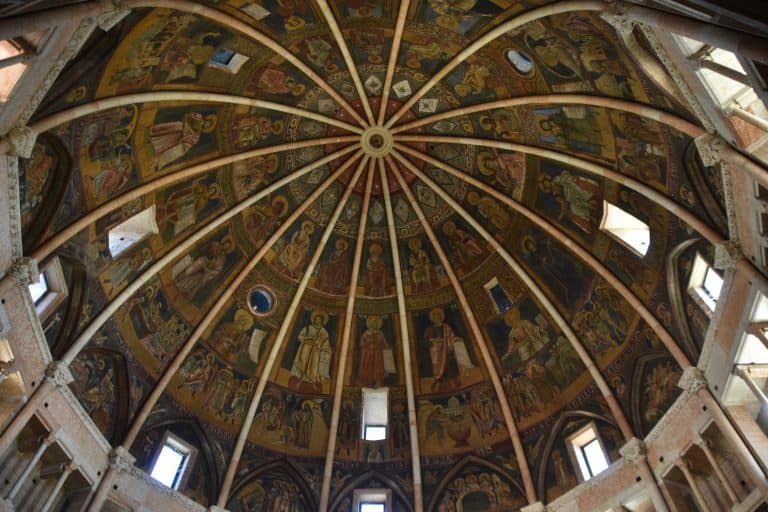
[Apr. 2025] Parma, located in the Emilia-Romagna region of Italy, is more famous for its ham and cheese, but the cathedral is also worth seeing.
After all, I read on the internet that it is a “masterpiece of medieval religious art.”
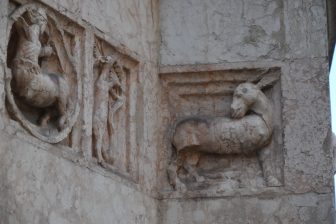
We’ve been there before, but this time, we were once again immersed in the art with a couple of friends who came from London.
First, we entered the baptistry next to the cathedral.
The cathedral is free to enter, but this one is to pay, and it costs €12 per person including the museum (€10 for those over 65).
Construction began in 1196 and was completed in the mid-13th century, and the pinkish marble on the exterior wall is said to be from Verona.
But the highlight is the ceiling.
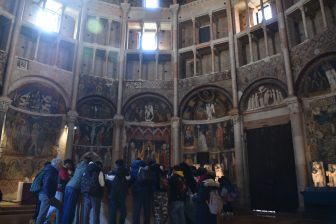
This fresco is said to be from the 13th century.
Our friend who is technically inclined, was impressed and said, “It would be impossible to make this with today’s technology.”
There were many children on a field trip, and I thought it was a luxury for Italian children to grow up surrounded by such real art.
The cathedral had a heavy interior similar to the one in Cremona that we visited the day before.
At the entrance to both cathedrals, there were two funny looking lion statues that looked like they had melted.
Lions remind me of Venice, but the reason lions are placed in front of churches is because the idea that lions are guardians of sacred spaces has been passed down from the ancient Orient.
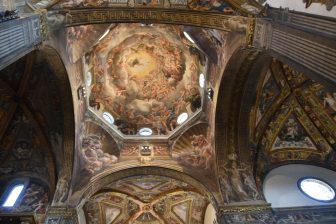
The ancient Orient is the area around the Tigris and Euphrates rivers, and it seems that lions used to be around there too.
Now that I think about it, I remember seeing a relief of an Assyrian king hunting lions when we went to the British Museum in London last time.
The highlight of the cathedral is the fresco “Assumption of the Virgin Mary” by a painter named Correggio, painted on the dome of the main altar.
It was painted between 1526 and 1530, and is an innovative use of the trompe l’oeil technique, which makes it look as if the ceiling is opening up to reveal heaven.
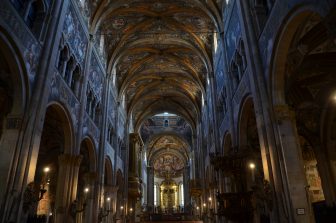
I thought, “Oh, but I saw something similar in Naples,” but when I searched, I found that there are many painters who have taken over Correggio’s technique, and there are domes like this all over the place.
It’s a bit of a trivia, but the trompe l’oeil technique originally started apparently in ancient Rome, and the frescoes we saw in the Pompeii ruins a few months before are also of this technique.
Also, Masolino, who painted the frescoes at the Collegiata Church in Castiglione Olona, which we visited recently, is also famous as an artist who uses this technique.
It’s nice that when you travel, various things come together and you can learn many things in a convincing way.

